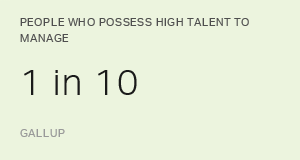Story Highlights
- Meaningful moments of vulnerability either build or break company culture
- Sharing positive moments through storytelling reinforces culture
- A culture of belonging brings out the best in people and organizations
Connecting with others and belonging are basic human needs that are essential to being our best selves.
Social science researcher Brené Brown defines belonging as "the innate human desire to be part of something larger than us. Because this yearning is so primal, we often try to acquire it by fitting in and by seeking approval, which are not only hollow substitutes for belonging, but often barriers to it. Because true belonging only happens when we present our authentic, imperfect selves to the world, our sense of belonging can never be greater than our level of self-acceptance."
When we leave an experience where we presented our imperfect selves yet felt belonging, we feel energized and at our best. When we leave an experience where we presented our imperfect selves and were ignored or ridiculed, we feel deeply disconnected and disengaged.
This is as true at work as it is in the rest of our lives. Our best selves emerge when we have experiences that connect us and create a sense of belonging.
So where does belonging come from in the workplace? A sense of belonging develops when identities align.
Each company has an identity, and it's as unique as an individual's identity. In an ideal situation, employees have experiences every day at work that confirm that their individual identity aligns with the company's identity. That alignment creates a feeling of connection, demonstrating that they belong at their company.
An organization full of employees who believe they belong is an organization full of employees who feel purposeful, inspired and alive -- in other words, engaged. And these engaged employees are more productive and better performers.
When individual identity aligns with company identity, employees are at their best, and the company is at its best. Companies often attempt to define their identity in an employee handbook, but it comes to life in the culture.
Culture is a critical part of an organization's identity. Culture is created through the experiences that employees have with the corporation and, just as importantly, with each other -- the everyday interactions with peers, managers and executives.
Are the experiences that employees have within your company creating a culture that gets the best from your talent? Are you inspiring a deep sense of belonging through authentic, aligned identities?
Experiences of vulnerability can create belonging or expose misalignment between employee and corporate identities.
Experiences of vulnerability reflect your culture and, if managed well, create identity alignment that unleashes the best in employees. Or, if mismanaged and not seen for what they are, the experiences can have just as negative an effect.
Gallup has chronicled four main types of vulnerable interactions that influence employees' sense of belonging. We refer to these interactions as "meaningful moments."
The four types of meaningful moments are:
- when you propose a new idea
- when you ask for help
- when you push back on something
- when you ask for a personal favor
In meaningful moments, how other people receive an employee's vulnerability is critical. It creates a loop: A great culture allows an employee to take vulnerable risks, and a positive response to vulnerability builds a great culture -- and the opposite is just as true.
The way vulnerability is received will either build the culture or break it, and will either help or hinder both the individual's and the organization's abilities to produce their best performance.
We've been speaking in conceptual terms up to this point, but what do meaningful moments look like in real life?
One female new hire told me about the first time she was asked for new ideas. At first, she was hesitant to reply; she worked in a male-dominated area and had come from a domineering culture that left her afraid to speak up.
When she finally tossed out her idea, it felt like a huge risk for her -- a true moment of vulnerability. To her surprise, the idea was not just accepted and appreciated, but acted on.
This company's identity states that it takes pride in people, products and purpose. In this meaningful moment, the entire company identity was at stake. But this woman's colleagues' response to her vulnerability proved to her that the company does take pride in people.
The experience helped to build the culture through her and her team and confirmed her alignment with the company identity, encouraging her to speak up with more ideas and give her best performance at work.
Another time, a single mother said that she needed full-time benefits but couldn't work on Fridays. She had a complicated childcare schedule with her ex-husband, and she wasn't sure how she was going to make it work at a new position. But she remembered that the hiring company takes pride in its people and only hires the best. She decided to take a risk and ask for Fridays off.
She was amazed at the leadership's level of accommodation as they worked together to determine a solution that was fair for everybody.
Unfortunately, sometimes interactions at work break the culture instead of building it.
A company that's in the process of expanding into international markets has a tiny office far from the company's headquarters. When the employees in that office need any kind of help, it's not clear to them whom to ask. As a result, when they need assistance, they email many people, searching for answers.
True to crowd psychology, when the responsibility to help the employees falls on everyone, no one answers their requests because everyone thinks someone else will do it. This leaves the international group feeling disconnected and disengaged.
This kind of experience reflects a culture that is disorganized and unhelpful -- even if the employee handbook says otherwise. The simple act of someone stepping up to look out for them would build the culture that the company aspires to have.
In a crushing instance at a different company, a salesperson made himself vulnerable enough to speak up and ask for training in a public forum with his peers. His company did not offer formal training but had stated that the company culture was open, collaborative and relationship-based.
After the forum, the man's boss brought him into his office and said that asking for help made him sound weak and that he should have been able to figure it out on his own.
We can all imagine how that salesperson felt about his company -- and possibly about himself -- upon leaving his boss' office. In this example of culture broken through a demoralizing experience, it's easy to see how damaging culture can be when a company's stated identity is not reflected through the actions of its leaders.
When the culture reinforces the company's identity, employees can safely put their whole selves into their work, feeling confident in going all out and making the big bets necessary for standout performance.
But when the culture violates the company's identity, companies can't hide. In a world of online reviews, businesses have to be honest and authentic about what it's like to work there or they will be exposed.
So how, as an employer, do you positively influence meaningful moments and make sure your company's culture reinforces its identity?
Use storytelling to spread awareness of meaningful moments of vulnerability and examples of how to manage them successfully.
As employers, we often try to create company identity in employee branding materials, but how do we make the jump from paper to culture? What inspires our employees to say, "I belong here"?
One answer lies in the most ancient way to influence people and build group identity: storytelling.
Companies have folklore just like other kinds of groups do -- stories about that one time someone did something that changed everything -- and they pass the stories down throughout the years.
The first step to creating this kind of folklore is bringing to light great stories of meaningful moments. Companies can publish these stories in newsletters, tell them in town hall and team meetings, and share them at recognition events. We should also communicate them during the hiring and onboarding processes so candidates understand the type of work environment they are signing up for and the types of experiences we want them to help us create, maintain and enhance.
One hospital encourages employees to initiate improvements to both employee and patient experiences. In one situation, the staff were tending to a near-death patient who shared that throughout his entire life, he'd felt a spiritual connection to nature, and he didn't want to die in a sterile environment.
The staff decided, against policy, to move the patient and his medical equipment outdoors to a small patio area where he passed away in a peaceful setting in nature. Because they had broken a hospital policy, the employees reported themselves to the CEO. In that conversation, they suggested turning the outdoor area into a garden so more patients could have the option that meant so much to one man.
Not only did the CEO like their proposal, but he also celebrated them at the next all-company meeting and committed money from the budget to the garden to make the idea a reality so more dying patients could spend their last moments in a beautiful, sensory-rich environment.
The employees of that hospital will tell and retell the story of when their CEO celebrated employees who took a risk for the sake of a patient's experience -- and contributed money to their idea even though their initial actions broke a rule. Each time an employee tells the story -- to a new hire, to a colleague or to a friend outside the company -- they reinforce the company culture and their personal tie to it.
Gallup can help you create a company culture that empowers your organization to be at its best and inspires your employees to say, "I belong here."
- Build a culture that gets the best from your people through our comprehensive culture solutions.
- Bring our Leading High-Performance Teams course to your organization to help all managers understand how to build an engaging environment.
- Empower employees and teams to discover and develop their strengths using our CliftonStrengths assessment.
- Download the State of the Global Workplace report to learn why global workplace productivity is low and what leaders can do to improve it.
Jane Smith contributed to the writing of this article.


